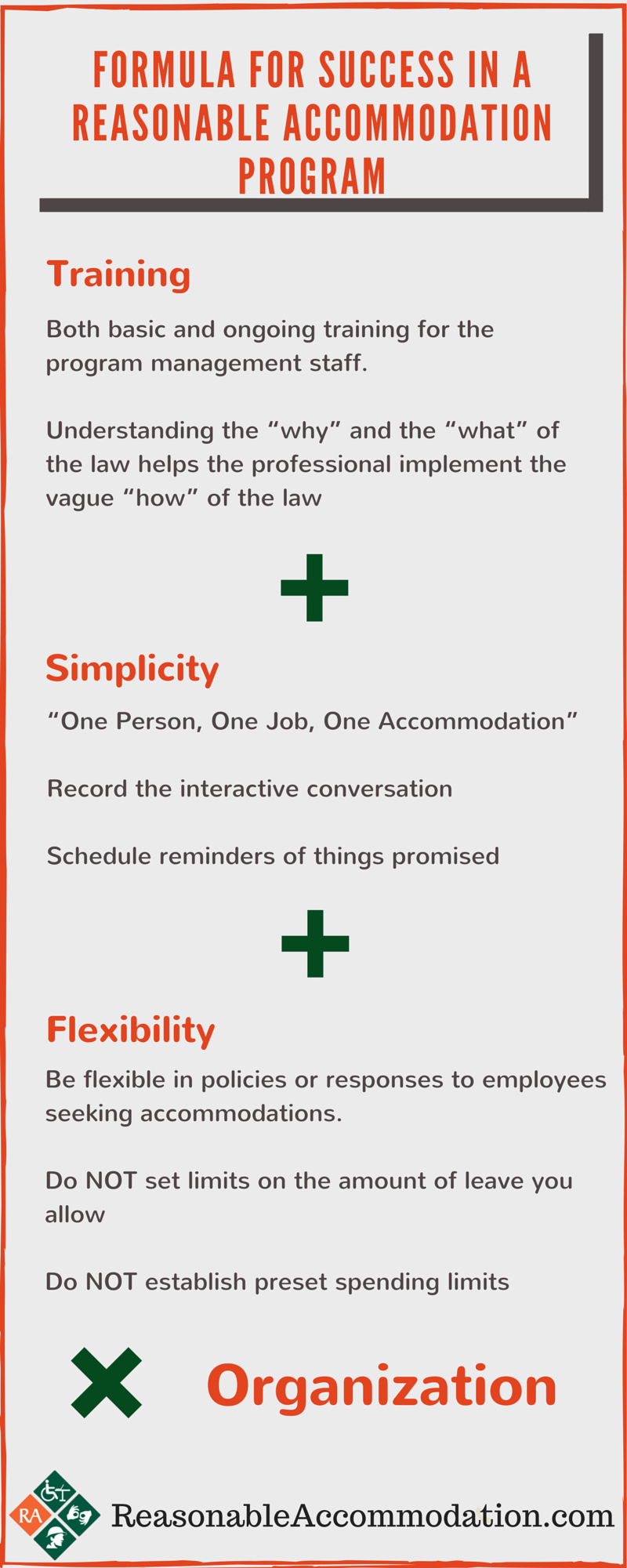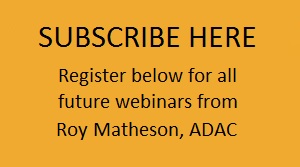On April 22nd at the DMEC conference in Washington, D.C. Amber Cheek, JD, Disability Inclusion and ADA Compliance Manager at the University of Missouri, and I gave a presentation titled “Anatomy of an EEOC Charge: An Insider’s View.” After my presentation I was approached by the head of human resources for a world famous company focused on service to women. She expressed “I know we have a problem but I don’t know where to begin.” Let’s look at this easily appreciated and often heard issue.
Making progress in any personal journey begins with stepping through that first metaphorical door. Our imaginary door is festooned with posters and stickers with messages about not wasting scarce time and resources, not making a legal mistake, and not adding to one’s daily burden. But once you have decided that the time has come to undertake the journey, you must step through the door into the new world!
The formula for success in a reasonable accommodation program is:
Success = (Training + Simplicity + Flexibility) x Organization
To me, a successful reasonable accommodation program lessens the daily burden on the human resource staff, meets the needs of both the employee and the company, and complies with both the tenets and spirit of FMLA and Title I of the amended ADA.
To be successful, a reasonable accommodation program must include both basic and ongoing training for the program management staff. Understanding the “why” and the “what” of the law helps the professional implement the vague “how” of the law. This training is available through my group (see: https://reasonableaccommodation.com/online-training/ for online, on-demand courses and webinars), the EEOC (http://www.eeoc.gov/ ), and conferences like the annual ADA Symposium (see: http://adasymposium.org/) and, of course, the Disability Management Employer Coalition (http://dmec.org/) conferences.
Keeping it simple (simplicity) drives program success. Rather than using Post-it notes and calendar reminders of things to do, use our RAMS software (Reasonable Accommodation Management Software) to guide your team through the process of taking a request for accommodation, recording the Interactive Conversation, scheduling reminders of things promised, logging each step in the process, and producing the history of a request in response to a “Request for Information” from the EEOC or, more likely, a plaintiff attorney.
Simplicity is also driven by the mantra of “One Person, One Job, One Accommodation.” Using this simple thought process to guide your daily RA interactions really works! Focus on the person at hand, using the software to guide you through the process and to set reminders, and stick to one job, one accommodation at a time.
Flexibility when managing requests for accommodation is written into Title I of the ADA. Unlike with certain components of the FMLA, we must be flexible in our policies or responses to employees seeking accommodation under Title I. Setting limits on the amount of leave we will allow, establishing preset spending limits for the acquisition of specific accommodations, or “protecting” certain jobs from transfers under Title I are not allowed under the law.
Flexibility can be enhanced when we use the “One Person, One Job, One Accommodation” mantra as our foundation in dealing with all requests and particularly when dealing with difficult requests. As I discussed in a recent blog about this concept, turn to this mantra when a requestor has pre-decided that a change in job title or a change in schedule is the only way to meet his needs.
Referring to our Reasonable Accommodation Training for Human Resource Professionals, keep in mind that the law says the individual must be qualified for the one job in question (his current job or the target transfer position), that the employer gets to select an effective and safe accommodation, and that the employee has the right to refuse the offered accommodation, but with possible termination consequences.
Keep it simple, get proper training, and stay flexible in your response to difficult requests.


